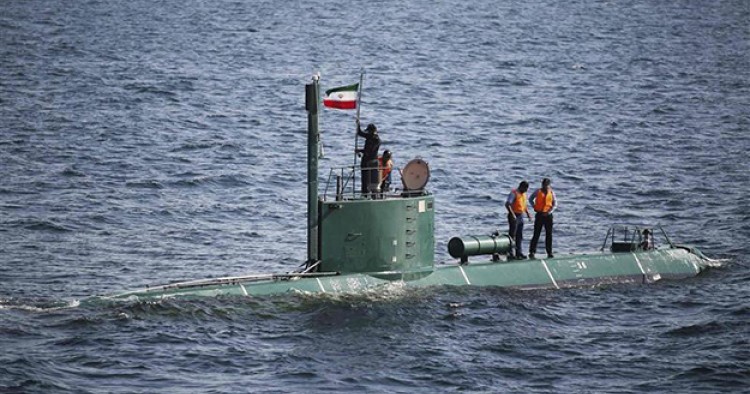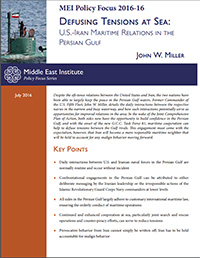Summary
Despite the oft-tense relations between the United States and Iran, the two nations have largely managed to keep the peace in the Persian Gulf waters. Former Commander of the U.S. Fifth Fleet, John W. Miller, details the daily interactions between the respective navies in the narrow and busy waterway, and how such interactions potentially serve as opportunities for improved relations in the area. In the wake of the Joint Comprehensive Plan of Action, both sides now have the opportunity to build confidence in the Persian Gulf, and with the onset of the new G.C.C. Task Force 81, maritime cooperation can help to defuse tensions between the Gulf rivals. This engagement must come with the expectation, however, that Iran will become a more responsible maritime neighbor that will be held to account for any malign behavior moving forward.
Key Points
- Daily interactions between U.S. and Iranian naval forces in the Persian Gulf are normally routine and occur without incident
- Confrontational engagements in the Persian Gulf can be attributed to either deliberate messaging by the Iranian leadership or the irresponsible actions of the Islamic Revolutionary Guard Corps Navy commanders at lower levels
- All sides in the Persian Gulf largely adhere to customary international maritime law, ensuring the orderly conduct of maritime operations
- Continued and enhanced cooperation at sea, particularly joint search and rescue operations and counter-piracy efforts, can serve to reduce tensions
- Provocative behavior from Iran cannot simply be written off; Iran has to be held accountable for malign behavior
Read the full Policy Focus here.
The Middle East Institute (MEI) is an independent, non-partisan, non-for-profit, educational organization. It does not engage in advocacy and its scholars’ opinions are their own. MEI welcomes financial donations, but retains sole editorial control over its work and its publications reflect only the authors’ views. For a listing of MEI donors, please click here.














